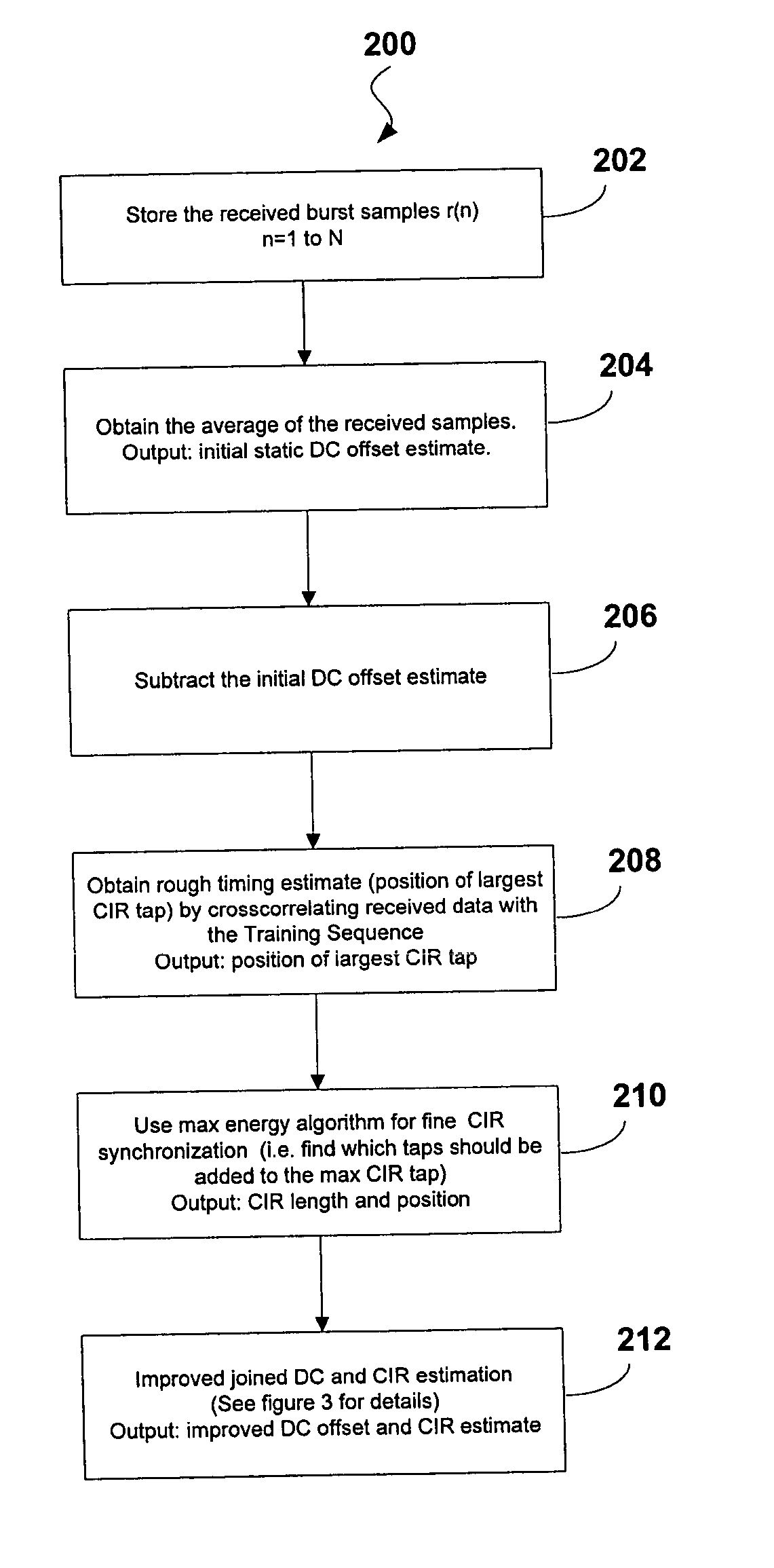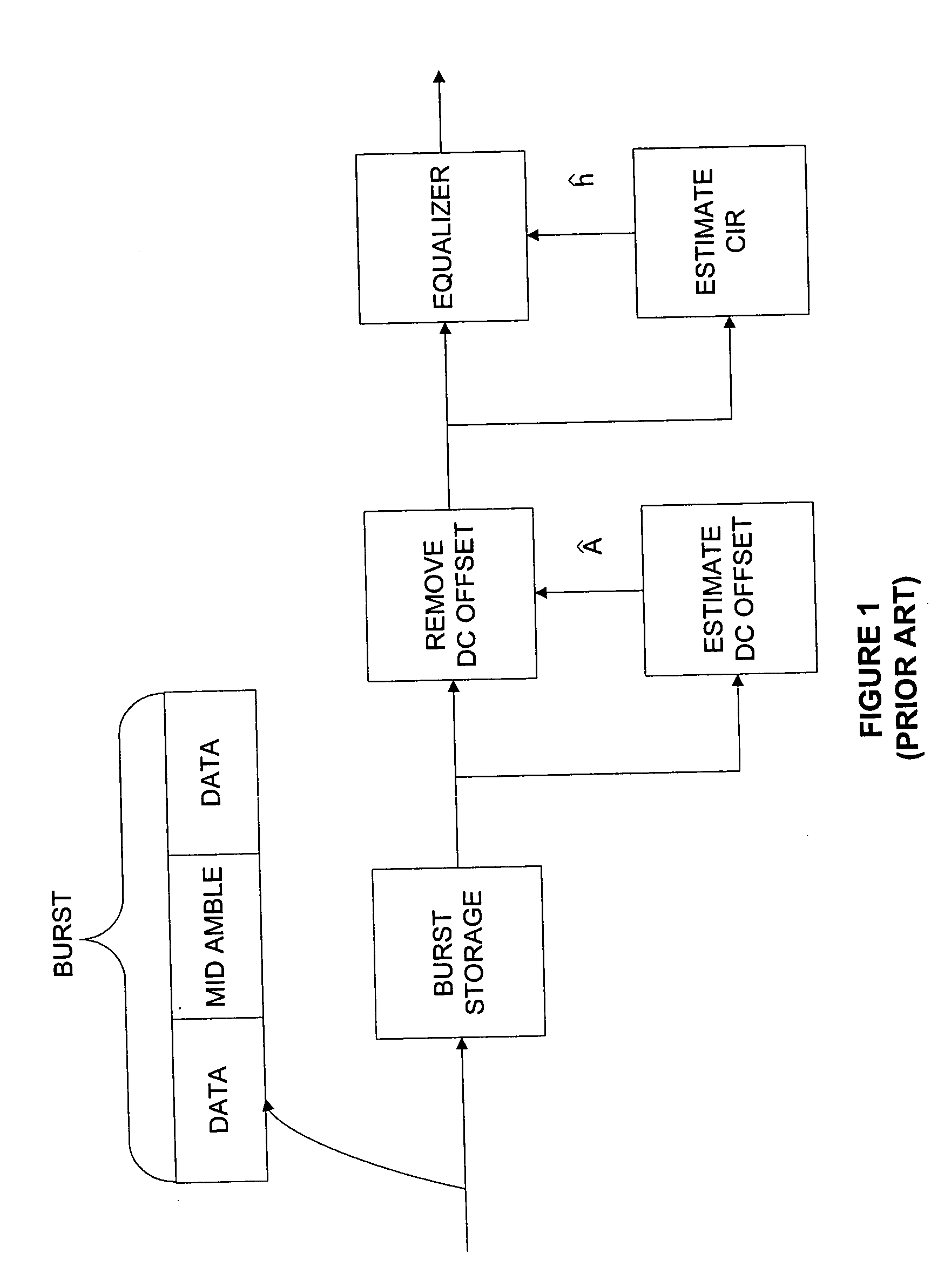Method for joint DC offset correction and channel coefficient estimation in a receiver
a receiver and channel coefficient technology, applied in the field of data receivers, can solve the problems of affecting the performance of the receiver, affecting the detection of transmitted data, and radio channel received signals also suffering from intersymbol interference (isi), and achieve the effect of reducing dc offs
- Summary
- Abstract
- Description
- Claims
- Application Information
AI Technical Summary
Benefits of technology
Problems solved by technology
Method used
Image
Examples
Embodiment Construction
[0035] Although the present invention has been shown and described with respect to several preferred embodiments thereof, various changes, omissions, and additions to the form and detail thereof may be made therein without departing from the spirit and scope of the invention.
[0036] In Direct Conversion receivers DC offset is created by the self-mixing of either the received signal or the Local Oscillator (LO) signal. In case of the received signal, signal leakage causes self-coupling via the LO path. In case of the LO signal, leakage and reflection from the antenna allow a portion of the LO signal to couple via the signal path, resulting in self-mixing. Both mechanisms produce two components: one at DC and the other one at 2 times the carrier frequency. While the second component is removed by LP filtering, the DC component introduces DC offset, which, in some cases, can be very large. In general, the signal to DC offset ratio (expressed in dB) can be negative. LO-produced DC offse...
PUM
 Login to View More
Login to View More Abstract
Description
Claims
Application Information
 Login to View More
Login to View More - R&D
- Intellectual Property
- Life Sciences
- Materials
- Tech Scout
- Unparalleled Data Quality
- Higher Quality Content
- 60% Fewer Hallucinations
Browse by: Latest US Patents, China's latest patents, Technical Efficacy Thesaurus, Application Domain, Technology Topic, Popular Technical Reports.
© 2025 PatSnap. All rights reserved.Legal|Privacy policy|Modern Slavery Act Transparency Statement|Sitemap|About US| Contact US: help@patsnap.com



